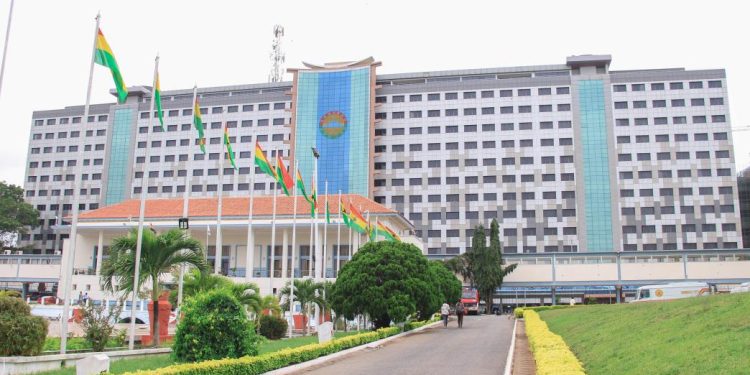Atlantic Lithium’s Request to Ghana for Ewoyaa Fiscal Concessions Requires Scrutiny
Ghana is close to launching its first-ever lithium mine in Ewoyaa, which could enhance the benefits of the mining sector for its economy and citizens. But just as parliament prepares to ratify the mining lease for the project, Atlantic Lithium, the company behind the mine, is asking the government for a major tax cut for its local subsidiary, Barari DV Ghana Ltd, to proceed with construction.
Can the project go ahead successfully without these tax breaks? And what does Ghana stand to gain or lose if the government agrees? The government and parliament must carefully assess the company’s request and make decisions in the interest of Ghanaians.
What exactly is Atlantic Lithium asking for and why?
Atlantic is reportedly requesting that the government either reduce its royalty rate from 10 percent to 5 percent or introduce a sliding scale royalty structure with different rates at different lithium prices, revise corporate income tax and remove import duties on capital equipment. The company argues that the Ewoyaa mine is currently unviable at prevailing global lithium prices. While it assumed an average price of USD 1,587 per tonne of lithium spodumene concentrate in its 2023 feasibility study, excess global supply has driven prices down to less than half of that—USD 785 per tonne in the first quarter of 2025 (when adjusted for Ewoyaa’s planned production profile).
But is the mine really unviable?
Atlantic now claims that the price falls mean its estimated post-tax internal rate of return (IRR) has fallen to just 13.6 percent, down from a previously projected 94 percent before debt financing. (Our modeling using the company’s assumptions suggested an IRR of 92 percent before debt financing as of last year). Despite the massive drop, the company has not publicly disclosed any of the assumptions informing this new estimate.
Our 2025 modeling (available on the Natural Resource Governance Institute website here) suggests that even if prices stay at USD 785 per tonne for the lifetime of the Ewoyaa project, the IRR would be around 25 percent before debt financing and 28 percent after debt financing—close to the 30 percent Atlantic says it needs to secure investment. So, what else has changed in Atlantic’s assumptions? Has the company revised its production plan in response to new price assumptions? Has its cost estimates increased, considering that mining projects typically experience development cost overruns of up to 40 percent? Atlantic must clarify how it arrived at its new IRR estimate of 13.6 percent and justify any adjustments it made to its assumptions. Not doing so risks undermining public trust and its social license to operate, storing up trouble for the project later.
What is the current price outlook?
While current lithium prices pose challenges for the Ewoyaa project, industry analysts do not expect the downturn to last. Lithium has been more volatile than other minerals in recent years, and while prices are unlikely to return to the 2022 peak of USD 8,500 per tonne, there is general consensus that they will rise again as global demand increases. Goldman Sachs projects prices will recover to USD 969 per tonne in 2026 and to USD 1,264 per tonne by 2028. The International Energy Agency expects the market to shift back into surplus in the longer term, supporting higher prices. These projections are not significantly different from the outlook when the government and Atlantic agreed terms and submitted the lease agreement to parliament for ratification. This reinforces the importance of Atlantic disclosing the assumptions that have subsequently led to its request for fiscal concessions.
What should the government demand in return for concessions?
It is difficult to assess whether the government needs to grant fiscal concessions to Atlantic for the Ewoyaa mine to proceed without further public information. However, suppose the government decides Atlantic needs some support to get the project off the ground, it must avoid granting concessions that apply even if prices recover and profits soar in the future. For example, the government should avoid granting a permanent cut to the royalty rate or adjustments to the corporate income tax structure that reduce rather than only defer payments. A sliding scale royalty system that adjusts based on global prices is a better option. In that case, it could consider setting a rate slightly above 10 percent if prices are significantly higher than expected (though any increase should be moderate, as prices do not always reflect a company’s actual profits).
The government could also improve other aspects of the lease agreement in exchange for granting any fiscal concessions. First, it could reduce tax avoidance risks by requiring benchmark-based pricing so Barari cannot underprice its sales. This risk is considerable given that Piedmont Lithium, which holds a 40 stake in the project, will buy 50 percent of Ewoyaa’s production for its U.S. refining plans, and refineries outside of China often require below-market prices to be viable. The government could also seize the moment to safeguard its interests by introducing limits on interest deductions to reduce profit shifting, ensuring non-dilutable equity clauses to protect Ghana’s stake and clear dividend distribution rules in the shareholders’ agreement to ensure the country receives a fair share of benefits.
Can renegotiation impact the government’s refinery plans?
The original lease agreement includes a provision for Atlantic Lithium to undertake a scoping study on the feasibility of building a lithium refinery in Ghana. Reports indicate that the company has submitted this study but the government has not made it public. The government can take advantage of any renegotiation to provide greater clarity on its lithium refinery ambitions and ensure Atlantic discloses its report to inform ongoing public dialogue on the outlook for Ghana’s lithium sector.
Our analysis shows that pursuing refining now would be premature and could cost the government around USD 500 million in lost revenues or require large public subsidies, given limited domestic feedstock and Chinese competition. The government would benefit from a mine-and-monitor approach instead, which means Ghana should proceed with the Ewoyaa mine as soon as possible while exploring other lithium deposits, monitoring developments in global lithium refining, and building domestic capacity for refining and use of by-products.
Whether or not the government negotiates concessions will have little impact on the economics of a refinery, but these discussions provide an opportunity to revisit and communicate the refining strategy with greater certainty.
Overall, before entering any renegotiation, the government should scrutinize the assumptions underpinning Atlantic’s revised profitability projections and thoroughly evaluate the potential impacts of various fiscal concessions across a range of lithium price scenarios. This analysis should include short- and long-term implications for national revenue and Ghana’s sustainable development. While concerns about the time parliament is taking to ratify the mining lease agreement are justified, this decision is too important to rush.








